From May 24th through May 26th, 2010, the NFL owners will be coming together for another set of offseason meetings. While rule changes and ownership approvals will be on the docket, there will also be another matter of importance which will be addressed: the site of Super Bowl XLVIII, which will be played in February of 2014. The deadline for submission of bids to host the game was Wednesday, May 12th, and three host committees got their proposals in to the National Football League for consideration:
- Raymond James Stadium in Tampa, Florida
- Sun Life Stadium in Miami, Florida
- The new Meadowlands Stadium in East Rutherford, New Jersey
Even though the meetings are still a few weeks off, the internet has already begun to buzz over which of the venues should be chosen and why. While this makes my discussion here entirely not unique, it makes it no less valid. It is my opinion that the NFL owners should select the new Meadowlands Stadium as the site for Super Bowl XLVIII, for the three reasons detailed below.
Reason #1: Meadowlands Stadium represents a new stadium for the Super Bowl market among the three bids.
Of the past decade of Super Bowls (going back to Super Bowl XXXV), both Raymond James Stadium (home of the Buccaneers) and Sun Life Stadium (home of the Dolphins) have hosted two Super Bowls a piece (with the city of Tampa having hosted 4 overall and the city of Miami having hosted 10, albeit in other stadiums). Tampa and Miami also hosted the last two games: Super Bowl XLIII between the Pittsburgh Steelers and Arizona Cardinals and Super Bowl XLIV between the New Orleans Saints and Indianapolis Colts respectively. The state of Florida also hosted a fifth Super Bowl in the past ten years with Super Bowl XXXIX having been held in Jacksonville between the New England Patriots and Philadelphia Eagles.
By contrast, despite having two NFL franchises in the same stadium, the state of New Jersey–though the teams are named the New York Giants and New York Jets–has never hosted a Super Bowl. Indeed, no northeast stadium has had this distinction, despite football fans in other regions of the country complaining of an “East Coast bias” in the sports media. The closest Super Bowl host city to the northeast market has been the city of Detroit, Michigan, which hosted Super Bowl XVI at the Pontiac Silverdome between the San Francisco 49ers and Cincinnati Bengals and Super Bowl XL at Ford Field between the Pittsburgh Steelers and Seattle Seahawks.
Playing Super Bowl XLVIII at Meadowlands Stadium would allow the NFL to take advantage of the unique tourist opportunities offered by the New York-New Jersey region while simultaneously reaching out to an entire region of NFL fans who have faced long travel and expensive flights to attend past Super Bowls.
It would also be the first step towards breaking a tradition of hosting the Super Bowl over and over again in the same few venues. In the same ten year period mentioned above, only eight different venues hosted the biggest game of the season; only Jacksonville was hosting as a first-time city. Including this year’s Super Bowl XLV (set for Cowboys Stadium in Arlington, Texas) and next year’s Super Bowl XLVI (to be held at Lucas Oil Stadium in Indianapolis, Indiana), the next two Super Bowls will be held at first-time hosting venues. It would be a shame for the NFL to go back to retreading the same old venues after the Louisiana Superdome hosts Super Bowl XLVII.
Reason #2: Playing a Super Bowl in a cold-weather city is long overdue and good for the competitiveness of the game.
When the NFL initially started playing the Super Bowl as a championship game between the winners of the NFL and the rival American Football League, the practice of selecting a host city for the game in a warm-weather environment was part of the planning. However, one of the last NFL Championship Games–the 1967 match-up between the Green Bay Packers and Dallas Cowboys–is widely regarded as one of the most exciting and memorable football games in the history of the league. Part of the reason for this status is because the game was held at Lambeau Field in Green Bay, Wisconsin and saw a game-time temperature of -13° F with a wind chill of around -48° F. These conditions led to the game being colloquially known as the “Ice Bowl,” and the referees of this famous contest had to call the game by shouting and gesturing with their hands because their whistles would freeze to their lips.
One of the main objections to the idea of hosting Super Bowl XLVIII at the new Meadowlands Stadium in East Rutherford, New Jersey is that the game will likely be contested in cold conditions–it being February in the northeastern United States–in a stadium that features no roof. No Super Bowl has been played in a cold-weather city that did not have either a dome or a retractable-roof stadium; even the future Super Bowl XLVI, set to be played in Indianapolis, Indiana, will be held under the retractable roof of Lucas Oil Stadium. The consensus seems to be that holding a Super Bowl in a cold-weather climate exposed to the elements will result in a game which will be decided primarily by the weather and attended by only the bravest of fans. Meanwhile the players on the teams involved would complain about having to suit up in a harsh temperature environment.
The fans’ answer to this complaint should be to “put up and shut up”; just because the “Ice Bowl” happened back in 1967 doesn’t mean that the idea of holding competitive and meaningful football games in sub-zero temperatures has gone away in the time since then. In January of 2008, the New York Giants visited the Green Bay Packers for the NFC Championship game at the very same Lambeau Field that was nearly as cold and a trip to Super Bowl XLII was on the line. The Indianapolis Colts were unable to break through and make it to the Super Bowl–despite being led by future Hall of Famer Peyton Manning–until Super Bowl XLI at the end of the 2006 season, when the Colts were able to have home-field advantage at their indoor home against the New England Patriots instead of making the trip to chilly Gillette Stadium.
It is a fallacy to think that the Super Bowl should be held in a climate-controlled and hermetically-sealed environment when there are considerably more teams that have outdoor venues during the season. If playoff games can be held in inclement conditions–along with the regular season games that are necessary to make the playoffs–then the Super Bowl should be no different.
The Super Bowl is the most-watched football game in the NFL season, and it makes sense that the league and its players want to have a skilled display of the game with high-scoring offenses. It is considerably less sexy for the casual football fan to sit through a blizzard for a game that ends up in a 6-3 final score on field goals than for the sort of excitement seen in Super Bowl XLIII and Super Bowl XLIV in the past few years. However, it is much better for the game in the long run because it allows the NFL to stop pretending that the Super Bowl—as currently operated–is representative of how football is played in winter months.
Reason #3: It will open up the Super Bowl to cities and stadiums who are deserving of the recognition and the opportunity to host the biggest single event in North American sports.
Even though holding Super Bowl XLVIII in East Rutherford, New Jersey would only be a single step in the process of expanding the host pool, a successful event would provide numerous football-crazy populations with a legitimate chance at having the game. When the host cities of the most recent Super Bowls are considered, it is clear that only a small segment of the league feel as though they have a legitimate chance to win the bid:
- Super Bowl XLIV: Sun Life Stadium in Miami, FL; Georgia Dome in Atlanta, GA; Reliant Stadium in Houston, TX
- Super Bowl XLV: Cowboys Stadium in Arlington, TX; Lucas Oil Stadium in Indianapolis, IN; University of Phoenix Stadium in Glendale, AZ
- Super Bowl XLVI: Lucas Oil Stadium in Indianapolis, IN; Reliant Stadium in Houston, TX; University of Phoenix Stadium in Glendale, AZ
- Super Bowl XLVII: Louisiana Superdome in New Orleans, LA; Sun Life Stadium in Miami, FL; University of Phoenix Stadium in Glendale, AZ
Despite there being 31 stadiums in the NFL and 32 fan-bases, recent Super Bowl bids have involved essentially the same few players. In this arrangement, there are some great stadiums being left out of the conversation entirely–mostly due to the same complaint about Meadowlands Stadium: the February climate.
While the temperature would be problematic, few fans would be able to find legitimate reason for a stadium as historic as Lambeau Field to not host the NFL’s championship game. The fans who pack the Seattle Seahawks’ Qwest Field have earned special designation as “The 12th Man,” and the unique architecture of the stadium would provide a top-flight backdrop for the league’s biggest stage. Gillette Stadium–home of the New England Patriots, unofficial team of the decade–would also provide a unique experience. An embattled Pittsburgh Steelers franchise would be able to regain some of their luster with a Heinz Field Super Bowl and the pomp and circumstance associated with the event.
For too long, the home fields of some of the most popular franchises in the NFL have been shut out from the process of hosting the single most-watched television event in the U.S. Making the decision to buck warm-weather tradition and host Super Bowl XLVIII at the new Meadowlands Stadium in East Rutherford, New Jersey would be a brave first step to an improved conceptualization of the Super Bowl and an increased number of host possibilities for the game.
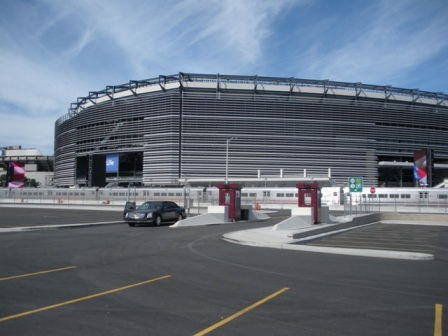
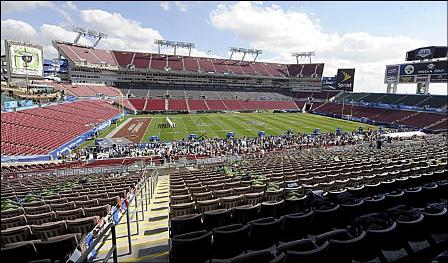
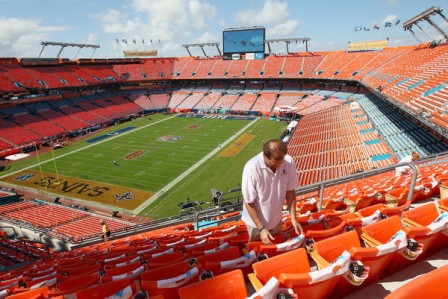
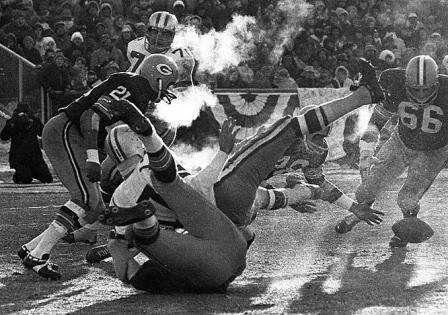
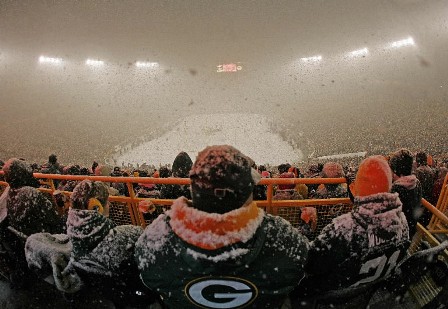
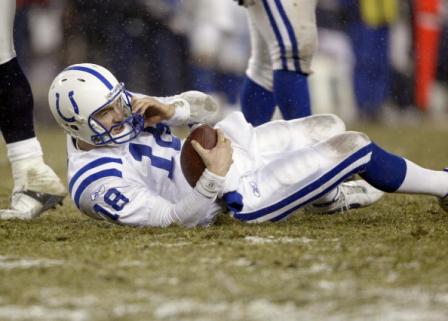
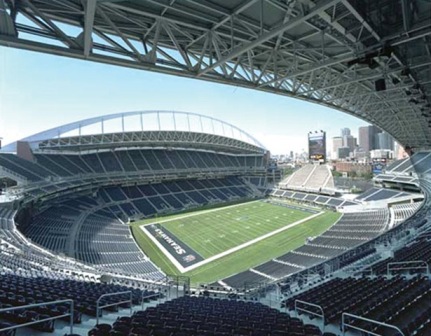
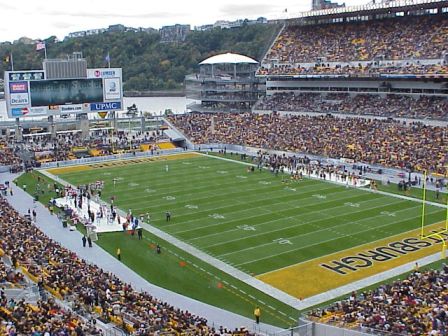


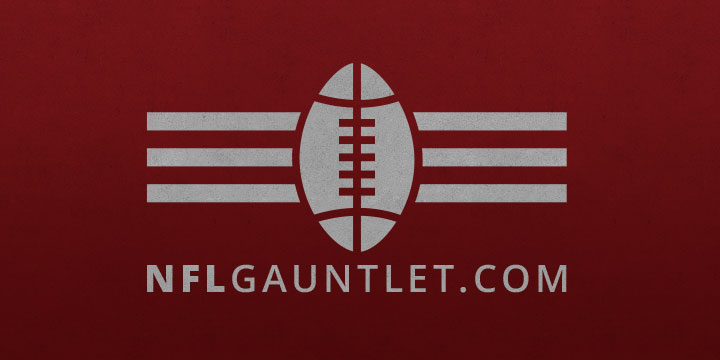

wow,this pic is looking very nice,it shows that people are very passionate about games.i really like this ……………….. New Orleans Saints Jerseys is an American football team.coach of this team are very hard worker & plays very well.i really like New Orleans Saints Jerseys.